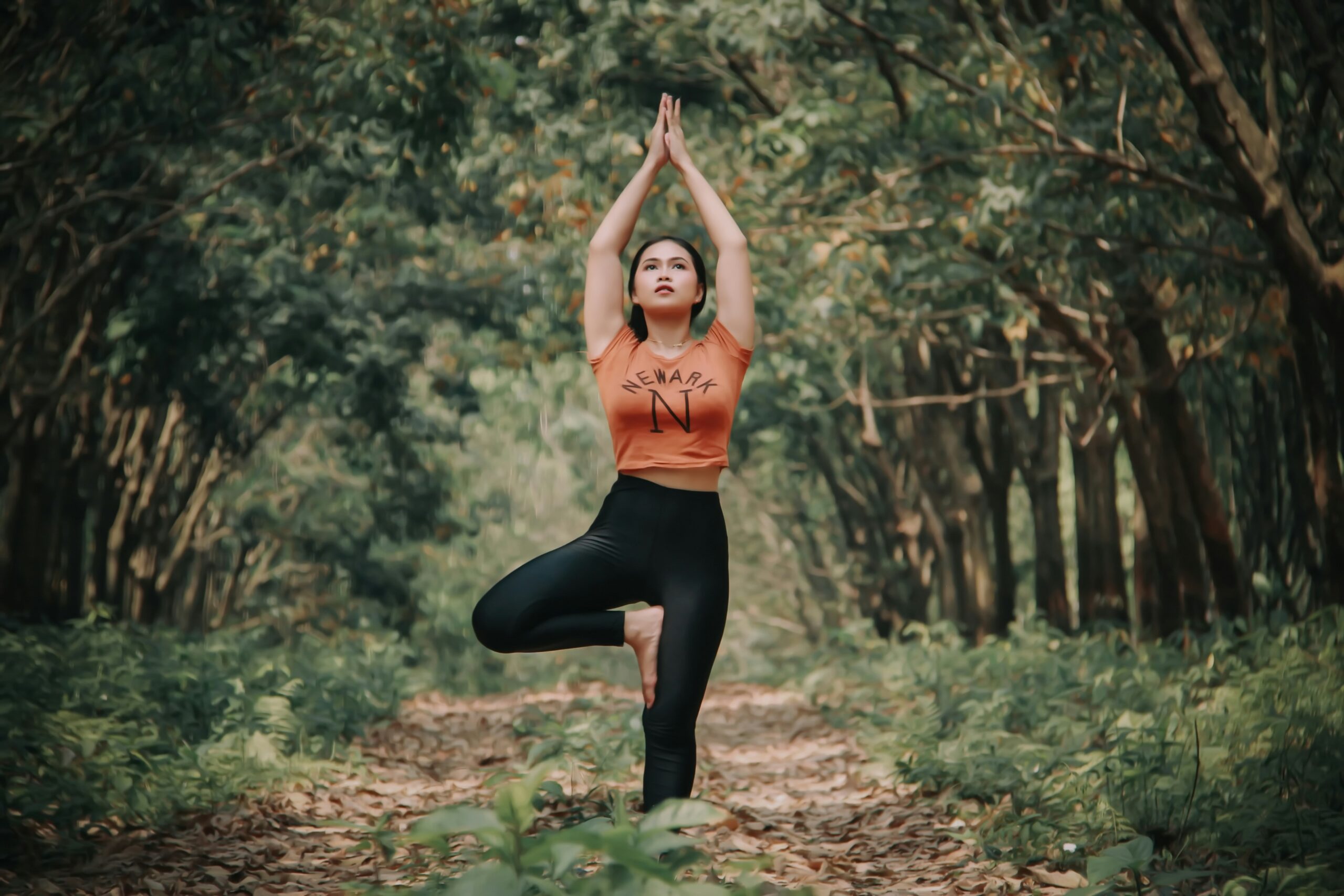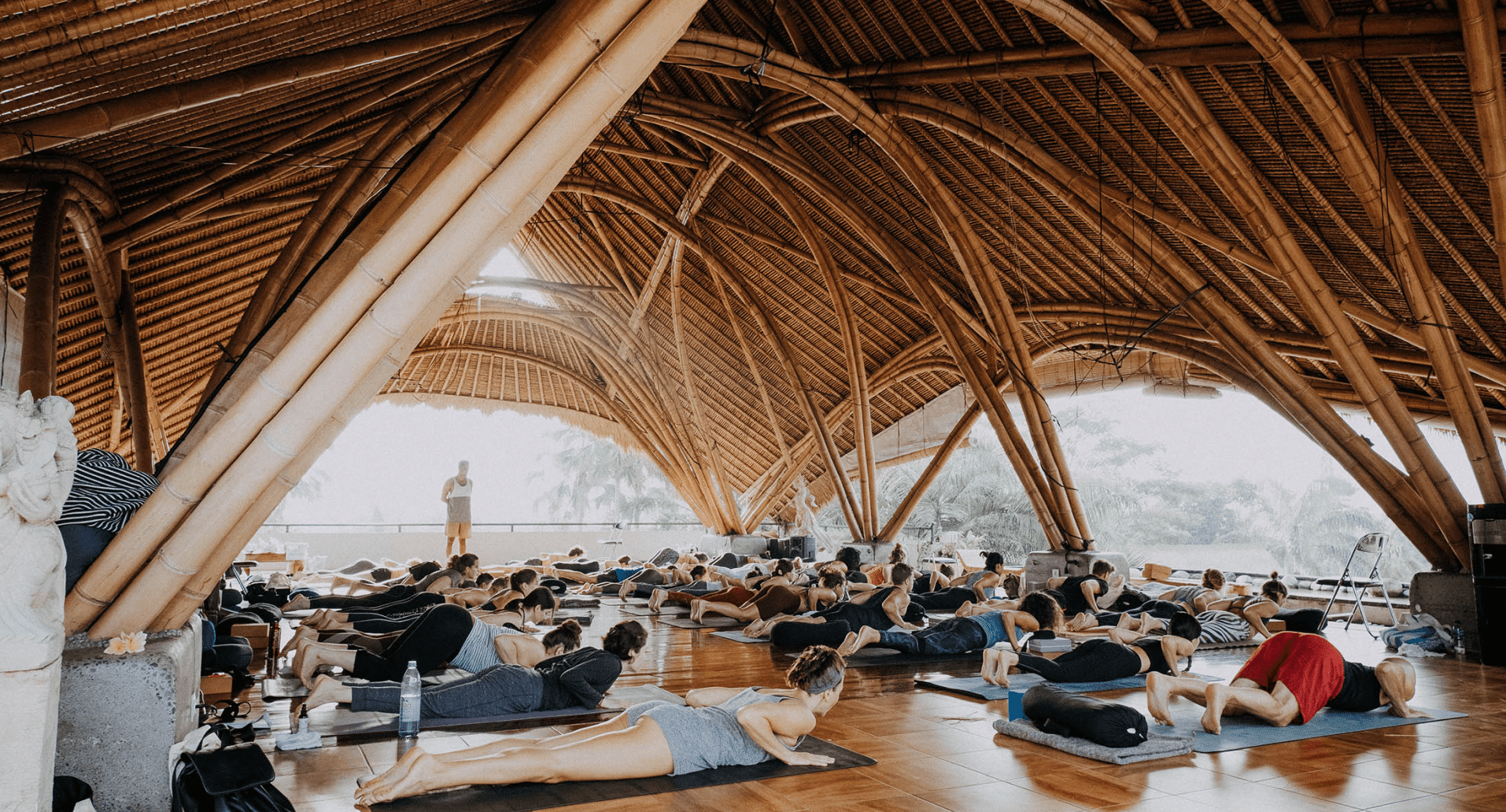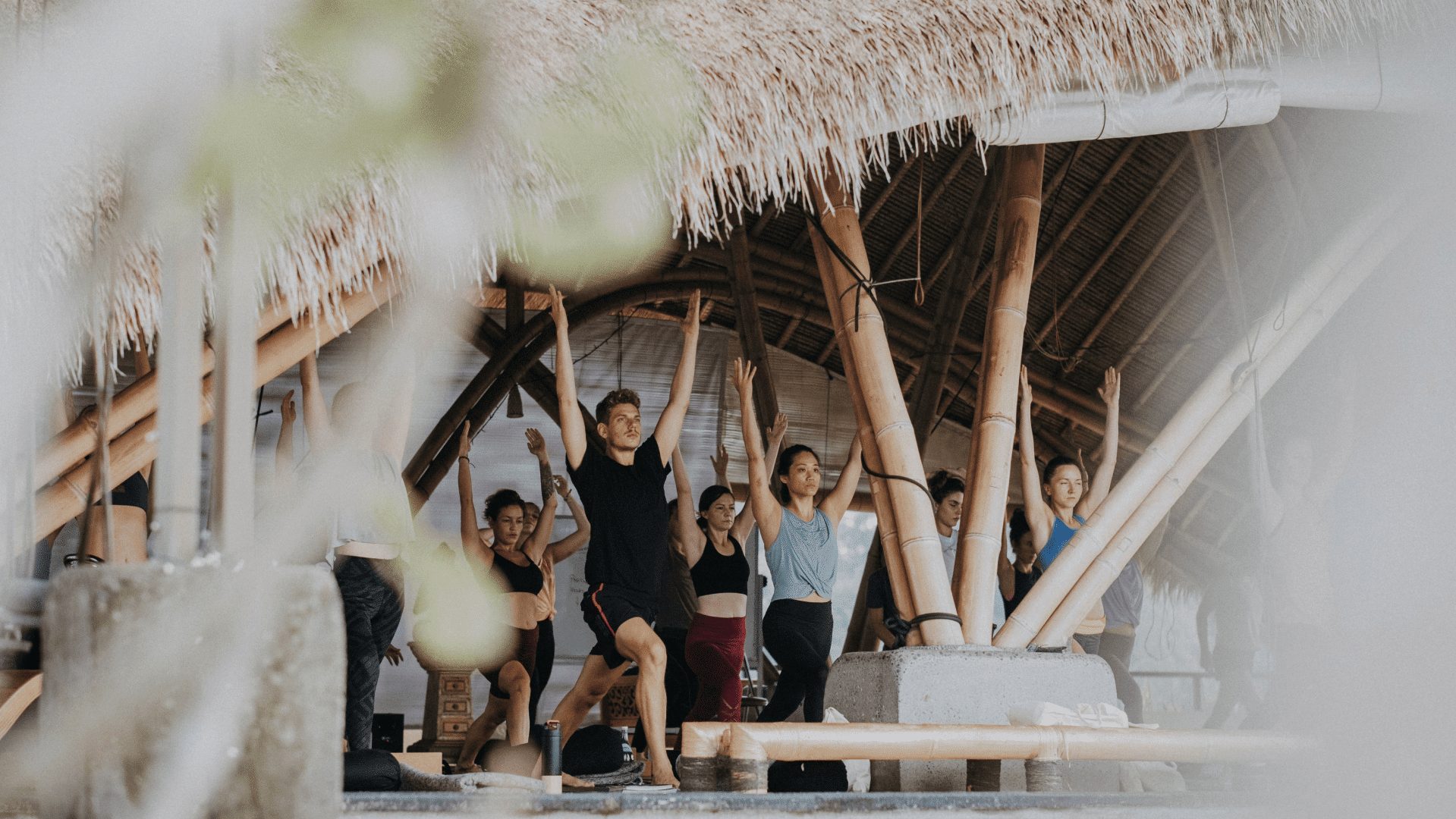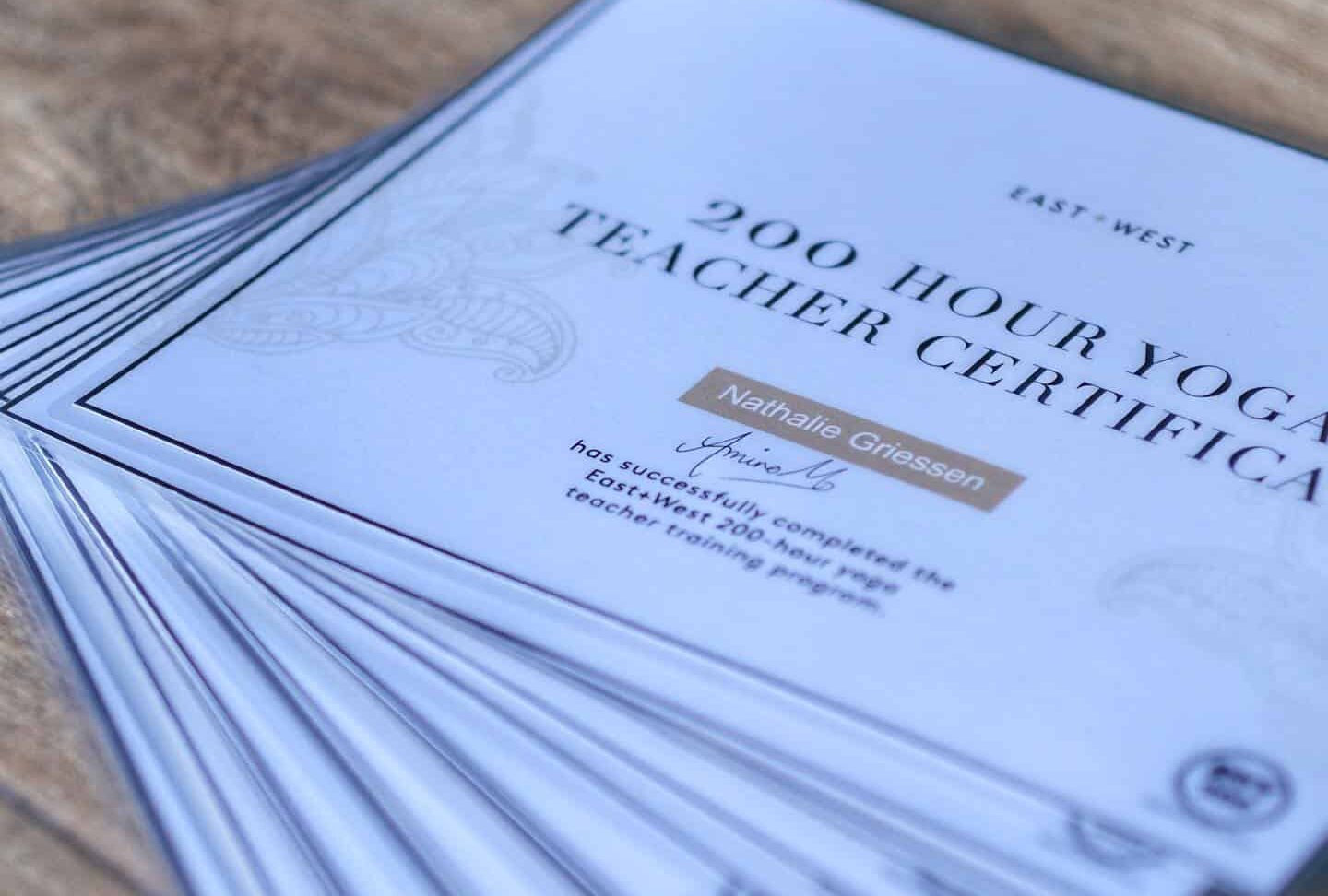
Tree Pose is more than just a physical posture; it symbolizes strength, stability, and connection to nature. As you delve into its intricacies, you’ll discover its transformative power in fostering balance, alignment, and mental concentration. Whether you’re a seasoned yogi looking to refine your practice or an instructor eager to deepen your understanding of this foundational posture, this guide is your go-to resource. As you delve into the intricacies of the Tree position in yoga, you’ll discover its transformative power in fostering balance and alignment.
Throughout this comprehensive guide, you’ll gain insights into the step-by-step instructions for practicing Tree Pose safely and effectively. From modifications for different levels of flexibility to variations that deepen the experience, you’ll learn how to tailor Tree Pose to suit your unique needs and those of your students. Whether you’re seeking to strengthen your body, calm your mind, or simply find a moment of stillness in your day, Tree Pose offers a pathway to holistic well-being.
Join us as we explore the benefits, anatomy, alignment, modifications, common mistakes to avoid, and teaching strategies for Tree Pose. Let’s root down, rise tall, and embody the essence of the tree together.
Benefits of Practicing Tree Position
The Tree position offers many benefits for both the body and mind. By practicing this pose regularly, you can experience a range of positive effects that will enhance your overall well-being.
One of the primary benefits of Tree Pose is improved balance. As you stand on one leg and root down through your foot, you activate the muscles in your feet, ankles, and legs. This strengthens these areas and helps you find stability both on and off the mat. Enhanced balance can be particularly beneficial for athletes and older adults who may be at a higher risk of falls.
In addition to balance, Tree Pose also helps improve posture and alignment. By focusing on maintaining an upright position and engaging the core, you develop a solid and stable spine. This improved alignment can alleviate back pain and promote better posture in everyday life.
Furthermore, practicing the Tree position can enhance mental concentration and focus. As you balance on one leg and fix your gaze on a steady point, you cultivate a sense of mental clarity and presence. This can be particularly useful for individuals who struggle with scattered thoughts or find it challenging to stay focused.
Incorporating the Tree position into your yoga practice can also help in building strength and flexibility. Standing on one leg engages the muscles in the lower body, including the quadriceps, hamstrings, and glutes. Additionally, extending the arms overhead in Tree Pose stretches the shoulders and chest, promoting upper body mobility.
Preparing for Tree Position
Before diving into Tree Pose, it’s essential to warm up your body to prevent injuries and enhance your performance. Warming up helps increase blood flow to the muscles, improve flexibility, and reduce the risk of injury. Specific warm-up exercises can help loosen up the muscles and joints, preparing them for the demands of the Tree position.
One effective warm-up exercise for Tree Pose is the ankle and calf stretch. Begin by standing tall with your feet hip-width apart. Step your right foot back, keeping both feet firmly planted on the ground. Bend your left knee slightly and press your right heel down, feeling a stretch in your right calf. Hold this position for a few breaths, then switch sides.
Another beneficial warm-up exercise is the hip opener. Stand tall with your feet hip-width apart. Cross your right ankle over your left thigh, just above the knee joint. Flex your right foot to protect the knee. Slowly bend your left knee and lower your hips down into a seated position, feeling a stretch in your right hip. Hold for a few breaths, then switch sides.
Additionally, gentle twists and side stretches can help warm up the spine and increase mobility. Depending on your preference, you can do these in a standing or seated position. Remember to listen to your body and only perform warm-up exercises that feel comfortable and safe.

Anatomy and Alignment for Tree Pose
Understanding the anatomy and alignment in the Tree position is essential for practicing and teaching this pose effectively. By knowing which muscles are engaged and how to align the body, you can ensure a safe and beneficial experience.
The primary muscles engaged in Tree Pose include the quadriceps, hamstrings, glutes, and calf muscles. These muscles work together to provide stability and support as you balance on one leg. Additionally, the core muscles, including the abdominals and lower back, play a crucial role in maintaining an upright posture.
To achieve proper alignment in the Tree position, start by standing tall with your feet hip-width apart. Shift your weight onto your left foot and lift your right foot off the ground. Place the sole of your right foot against your left inner thigh, above or below the knee, depending on your comfort level. Avoid placing your foot directly on the knee joint to prevent strain or injury.
Once your foot is in position, engage your core muscles and lengthen your spine. Roll your shoulders back and down, opening your chest. Find a steady gaze on a fixed point in front of you to aid in balance and concentration. Press your palms together at your heart center in a prayer position, or extend your arms overhead for an added challenge.
Psssst! Are you looking to learn more about alignment? Transform your life with the world’s leading yoga teacher training in Bali or Costa Rica. We create highly curated, life-changing yoga and meditation trainings with master-level instructors from India and the West. Whether new to yoga or seeking to deepen your practice, our training caters to all levels, ensuring the best yoga teacher training experience possible.
Modification and Variations of Tree Position
One of the first modifications for beginners is to practice with the support of a wall. By standing with the back against the wall and using the hands for balance, individuals can focus on finding stability in the pose while gradually building confidence in their balance abilities. Another beginner-friendly modification is Half Tree Pose, where the foot is placed on the calf of the standing leg instead of the inner thigh. This variation provides more stability while still working on balance and alignment.
For those who may struggle with balancing on one leg, an option is to keep the toes of the lifted foot on the ground. This modification can be done by lightly resting the toes beside the standing ankle or placing the heel against the ankle for added support. Additionally, using a chair for support is beneficial for individuals with limited balance or mobility. By standing beside a chair and holding onto it while lifting one foot into Tree Pose, practitioners can work on their balance gradually and safely.
As practitioners progress their Tree position in yoga, they can explore variations to deepen the experience. Extended Tree Pose involves extending the arms overhead, bringing the palms together in a prayer position, or reaching them upward with the fingers spread wide. This variation helps improve balance while also stretching the arms and upper body. Another challenging variation is Revolved Tree Pose, where practitioners twist their torso to bring one arm across the body, placing the elbow outside the opposite thigh. This variation enhances balance, core strength, and spinal flexibility.
Floating Leg Tree Pose is an excellent option for advanced practitioners looking to challenge themselves further. In this variation, the foot of the standing leg is lifted off the ground, requiring strong core engagement and stability to maintain balance. Additionally, closing the eyes while in Tree Pose can intensify the necessary focus and concentration, adding an extra layer of challenge and mindfulness. These modifications and variations cater to practitioners of all levels, allowing them to tailor their Tree Pose practice to suit their individual needs and goals while reaping the many benefits this pose offers.
Teaching Tree Pose to Beginners
When introducing Tree Pose to beginners, it is crucial to lay a solid foundation focused on balance, stability, and proper alignment. Start by having them stand tall with feet hip-width apart, distributing weight evenly. Emphasize grounding through the standing foot and engaging the core for stability. Encourage a lengthened spine, lifted chest, and relaxed shoulders. These foundational elements set the stage for a successful Tree Pose practice.
For beginners, props like a wall or chair can provide valuable support as they explore Tree Pose. Please encourage them to utilize props as needed until they feel more confident in their balance. Additionally, introducing Half Tree Pose as a modification allows beginners to work on balance without the whole challenge of lifting the foot onto the inner thigh.
Verbal cues and demonstrations play a crucial role in effectively teaching Tree position in yoga. Offer clear instructions on positioning the foot on the standing leg, lifting the knee to the side, and finding a focal point (drishti) for improved balance and concentration. Use positive reinforcement and create a supportive environment where beginners feel comfortable exploring and growing in their practice.
As beginners progress, gradually introduce variations such as extending the arms overhead, trying different hand positions, or closing the eyes. Encourage visualization techniques where beginners imagine themselves as strong, steady trees rooted in the earth. Patience and encouragement are essential, as mastering Tree Pose takes time and practice. By incorporating these teaching strategies, you can help beginners build confidence, improve balance, and experience the benefits of Tree Pose in their yoga journey.
Common Mistakes to Avoid in Tree Position
When practicing Tree Pose, it’s important to be mindful of common mistakes that can compromise proper alignment and balance. One of the most crucial points is to avoid placing the foot of the lifted leg directly on the knee of the standing leg, as this can strain the knee joint. Encourage practitioners to set the foot above or below the knee, on the inner thigh or calf, respectively, to maintain stability and safety.
Another common mistake is leaning the torso too far forward or backward, which can disrupt balance and alignment. Emphasize keeping the torso upright and centered over the standing leg, with the shoulders relaxed and aligned over the hips. Another key point is to avoid overarching or collapsing the lower back, as this can strain the spine. Encourage a neutral spine by engaging the core muscles and lengthening through the crown of the head.
It’s also important to watch for tension in the toes or jaw, as gripping the toes or clenching the jaw can indicate overall muscular tension. Encourage practitioners to keep the toes relaxed and spread, with a soft jaw and facial muscles. Additionally, remind practitioners to avoid holding their breath or shallow breathing during the pose, which can lead to tension and instability. Encourage smooth and steady breathing throughout the practice to enhance relaxation and focus.
Lastly, remind practitioners not to force the pose or push too hard to achieve a deep variation before their body is ready. Honoring the body’s limits and progressing gradually is essential for safety and effective practice. Encourage practitioners to maintain focus and a steady gaze throughout the pose to enhance stability. By avoiding these common mistakes and practicing mindfully, students can experience the full benefits of the pose.
Incorporating Tree Position in a Yoga Sequence
Now that you have a solid understanding of Tree Pose and its benefits let’s explore how to incorporate it into a yoga sequence. Tree Pose can be practiced at any point during a yoga class, but it is often included in the standing balance section of the sequence. Here’s a sample sequence that includes Tree Pose:
– Begin with a gentle warm-up to prepare the body for the practice. This can include gentle stretches, joint mobilization exercises, and a few rounds of Sun Salutations.
– Move into a standing sequence, focusing on building strength and stability. Include poses such as Warrior I, Warrior II, and Triangle Pose to warm up the legs and open the hips.
– Transition into the standing balance section of the sequence. To center yourself, start with a simple balance pose like Tadasana (Mountain pose). Then, introduce Tree Pose as a foundational balance posture. Guide your students through the step-by-step instructions, emphasizing proper alignment and engagement of the core muscles.
– After practicing Tree Pose on one side, transition into a counterpose to release any tension and stretch the muscles. Standing forward fold (Uttanasana) or a gentle twist like Revolved Triangle pose can be effective counterposes.
– Repeat Tree Pose on the other side, allowing your students to experience balance and grounding on both legs.
– Wind down the sequence with a few seated or reclining poses. End with a relaxation or meditation practice to integrate the benefits of the practice.
Want to learn more?
Check out the East+West yoga teacher training in Bali or Costa Rica. We create highly curated, life-changing yoga and meditation trainings with master-level instructors from India and the West. Whether you’re new to yoga or seeking to deepen your practice, our training caters to all levels, ensuring the best yoga teacher training experience possible.














